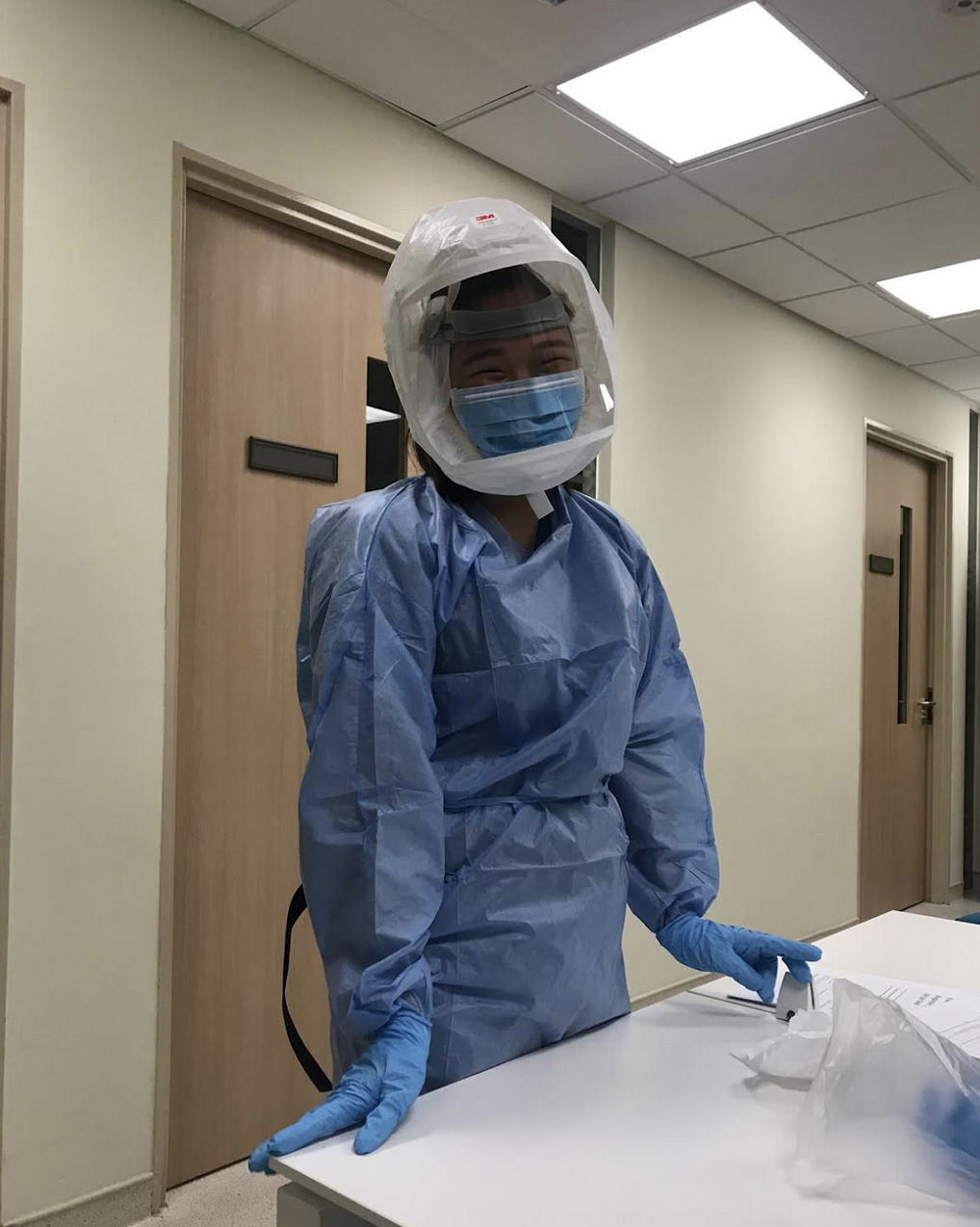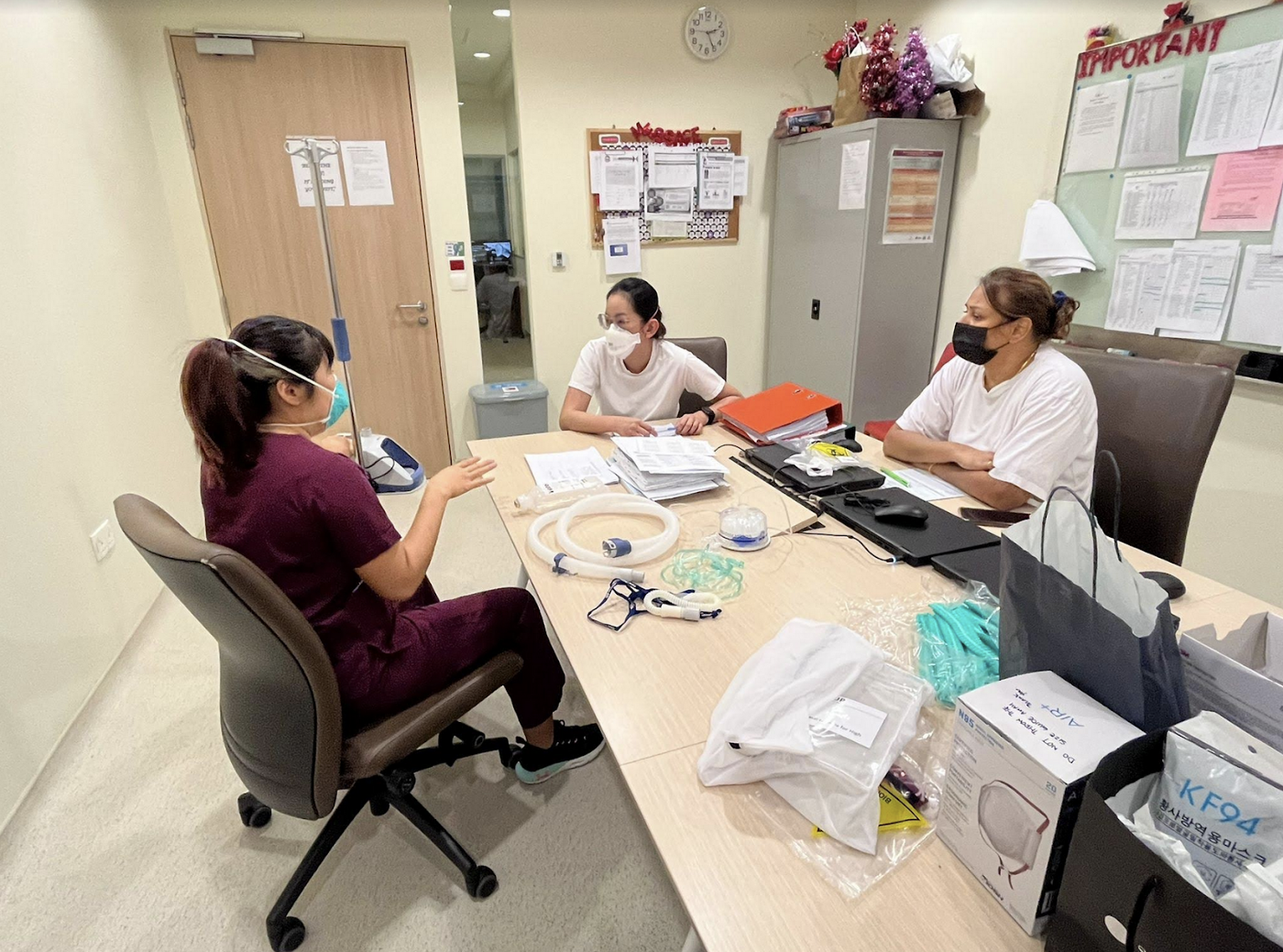Have you ever wondered what it’s like to work in the healthcare sector? A majority of us generally view the healthcare industry from the perspective of a patient, but seldom as a healthcare professional. In this article, we talk to Si Lea, a Respiratory Therapist working at Ng Teng Fong General Hospital and Jurong Community Hospital, about her journey towards becoming a Respiratory Therapist.
Before joining the healthcare industry, Si Lea was in a completely different field: Law. In her first year at the Singapore Management University (SMU), Si Lea chose law as she had not settled on a career choice yet, and law was a safe option that offered the most mobility for future career options. She recounted: “After a year, I realised I wanted something that was collaborative and allowed for more active learning. In healthcare, it’s fast-paced, you’re always going to be working in a team, and not everything is about corporations or money.”. Fuelled by this newfound passion, she took the leap of faith and applied for the Healthcare Merit Award, securing the scholarship and with it, a major shift in career trajectory.
The Healthcare Merit Award provides students interested to pursue allied health with 13 disciplines to choose from — so how did Si Lea decide on Respiratory Therapy? “I liked how Respiratory Therapy allowed me to specialise immediately with just an undergraduate degree,” she explained, “as opposed to medical school, which (including residency) can take up to 10 years. With this speciality, I’m able to serve as a constructive member of the team — in the Intensive Care Unit (ICU), my skills are valuable and useful.”
She was also drawn to the field’s dynamism: “I liked the idea of challenging myself through a fast-paced environment and seeing lots of different kinds of patients. Innovation is an inherent part of our daily work as we constantly improve processes to provide better care for our patients and to ease our workload. There are clear progression paths within the profession itself, and even options to branch out into research, education, or management within the hospital structure.”
Don’t let the phrase “Respiratory Therapy” scare you off — Si Lea explained that the term essentially means providing critical care for those who require breathing support. Breathing is essential to life, hence Respiratory Therapists are crucial points of support for patients, ensuring they have an ample supply of oxygen the moment they enter the hospital. “We primarily work in the ICU with patients who are pretty sick,” Si Lea shared. “We manage various machines that support or even fully take over the job of breathing for patients who are too weak or ill to maintain good oxygen levels. We also help doctors with any examination procedure related to the lungs, like inserting breathing tubes or scopes and we also provide support services in the general wards for patients with chronic conditions such as sleep apnea.”

Ready for the day: Si Lea in her protective gear.
As a Respiratory Therapist, Si Lea works with a range of patients, from those with short-term critical conditions to those who require more long-term care. Hence, there really isn’t an average working day for her. She could be discussing a particular patient’s treatment plan with her team at one moment, and find herself responding to a Code Blue alarm (when a patient’s heartbeat or breathing stops) at the next, maintaining the patient’s airway while another healthcare professional performs cardiopulmonary resuscitation (CPR).
“That’s the fun part about working in the ICU — every day can look wildly different. It keeps the interest (of working as a Respiratory Therapist) alive,” Si Lea enthusiastically expressed.
A career as fast-paced as a Respiratory Therapist is equal parts challenging and rewarding, and Si Lea shared that it all lies in her patients.
“There are days when it feels like we’re losing patient after patient, where no matter what we do, they don’t get better. At a certain point, you have to accept that there are limits to what medicine can do, and you have to look at the person in front of you as a human rather than just a patient to treat. Providing respectful end-of-life care is just as crucial as any other life-saving operation or procedure, bringing comfort to both the patient and their loved ones at the end,” Si Lea explained.
On the other hand, Si Lea finds fulfilment in her patients who do recover: “Once, we had a young patient around my age. He had a very sudden onset of myasthenia gravis, a disease that weakens the muscles in your whole body. When he came to us, he couldn’t even lift a finger. So we had to start from zero, doing everything we possibly could each day to keep his lungs, brain, and other organs functioning as he recovered. He spent close to a year in the ICU. It was an excruciatingly slow process, and of course, there were a lot of setbacks. Sometimes, we wondered to ourselves: Has he reached his limit? Maybe this is as far as he’s able to go. But I saw him progress from moving one fingertip to moving his head, and his feet, and eventually, he could stand up — and he could go home. He went from being unable to even blink his eyes to living a mostly normal life.”
This incredible recovery was one of the highlights of Si Lea’s career, and one she considers herself lucky to have experienced after spending only three years in the profession.
Of course, with an intense work environment and the stress of overseeing her patients’ recovery, the question of maintaining her mental health and work-life balance was one that Si Lea found very relevant. “I really value how the whole team of doctors and nurses are always there to help — you never feel as though you’re the only one.” Beyond having a reliable team of co-workers, she also believes in the importance of having a good support system outside work: “I’ve been really lucky to have a close-knit group of family and friends. At home, I can openly vent if I need to, and my family will listen and talk to me about it. My friends also helped me through my studies — they always encouraged me to keep with it, and when I came back, they were really excited for me as well.”

Si Lea (first from left) teaching nurses in the emergency department isolation unit how to use specialised respiratory equipment to treat COVID patients.
Si Lea also stands by the importance of setting aside time for yourself: “Sometimes I just want to stay in bed the whole day and just watch Netflix without thinking or doing anything, because I’ve worked three or four 12-hour shifts in a row and my brain is just fried — I do that if I have to. Or if I want to go out, do something and get distracted, my friends will do that with me.”
As a final takeaway for those who are considering a career in healthcare, Si Lea emphasised the importance of resonating with your chosen profession. “It’s not easy,” she shared, “but try not to let anyone else tell you what you should or shouldn’t be doing. Because at the end of the day, this is going to be your profession and your career; at the end of the day, you’re the one who has to face the struggles that come up because of your choices. But that also means you get to enjoy all the rewards of your choices as well.”
“So really, be true to yourself in choosing what you want to do. It’s okay to take time, right? Even if you do a year somewhere and you jump to another area of study or career, it’s okay. And it’s okay to not do what everyone else is doing, as long as you feel that it’s right for you.”
This
article was first published by SGExams.